August 18 – 19, 2011
Our 40 mile trip south on the first portion of the Richelieu River ended at the delightful town of Chambly. Southbound cruisers encounter the three lock flight, 35' lift, to enter what I think of as the Chambly Canal.
I told you in the last post that the Richelieu River and its associated canals mostly facilitated the timber trade from the St. Lawrence River to the upper reaches of Lake Champlain. The Chambly Canal also aided the local villages along the water route for facilitating transport of hay, wheat, apples, and firewood. Sloops, schooners, and horse-drawn barges moved the goods until the railroad and trucking industry took over in more modern times. Much of the early manual, canal mechanisms and stonework have been preserved to have the canal operate like it did in the days of its glory, but now to only serve recreational vessels.
These locks proved to be different from those that we had used in the Rideau. Notice in the above photo that big blast of water coming right out from the front of the lock to fill the chamber. There are actually two of those, but the second isn't visible in the photo. The lock chambers are only 22.5' wide, and we are 17.5' wide with fenders, so there is no room at all for another boat next to us. One boat was able to get in behind us, but we had to pull all the way forward, right into the blasting water.
In this photo, notice the big lake in the background, Bassin de Chambly. The Chambly rapids, which the locks are designed to bypass, empty in here and the picturesque town is built up around its perimeter. Note the Canadian flag, not the flag of Quebec, in the photo. Even though we are still in Quebec we are on the Parks Canada property, a division of the government, not the province. Also notice all the white lines tied to the bollards on either side of the lock. The staff hands those lines to the line handlers aboard the boats; you don't use your own lines.
This bridge operates in conjunction with Lock 3. Busy traffic is forced to stop in both directions until the boats are out of the chamber and the bridge can be swung back in place. That is Mont St.-Hilaire, about 10 miles in the distance, quite a landmark for views from Chambly.
After we locked through the flight, we tied up on the west bank adjacent to a nice little park. Even though the road runs by over the swing bridge, at night traffic is at a minimum, and the noise isn't bad.
Chambly isn't a quaint, little country village; it is a modern town with all the conveniences that you would need to restock your pantry or parts locker within easy walking distance. However, there is a restored section of town, and the waterfront area closest to the docking wall is the nicest part of the town. There are numerous restaurants of all types, a few boutiques, and ice cream stands.
Eddie wanted us to go get hotdogs for lunch at Hot Dog King, just a walk down the street. When we got to the counter we realized the kid taking orders only spoke minimal English. Fortunately they had numbered pictures of all the food choices, so we could just say the number or point. However, they all had one item listed as $.30 extra. When I asked about it, the counter kid couldn't answer, but the cook yelled out what I thought was “for grilling the bun”. We said we didn't want that, and we all placed our orders. Eddie picked up the food when the order was called and brought the food to the park next door where Wayne and I were waiting with the drinks. He handed me my hot dog which was wrapped in paper. My $6 hot dog looked just about the same size as a cigar! The first thing that went through my mind was that we made a mistake, and the $.30 was for if you wanted a bun. However when we took the wrapping off, there was really a bun there. The French hot dog and bun were much thinner than those corn dogs on a stick that you get at carnivals. We had never seen such a skinny hot and bun. A hungry person could easily eat 6 of those things. We would not recommend ordering from Hot Dog King, even if you can afford it
Fort Chambly is located at the intersection of the rapids and Bassin de Chambly, so is quite a site when approaching the flight locks, located a short distance away. It is well worth the time to visit the property and learn about its history, old and modern. Wayne and I decided to spend the morning at the fort. Eddie was still busy digesting the material we gathered at Fort Henry in Kingston, a month ago, and decided not to go.
After the British abandoned the fort in 1856 and turned it over to the Canadian government it fell into a state of disrepair. Locals began taking stones from the fort to use for construction of their own homes. One man took it upon himself to move into what was left of the fort and began a restoration of his own until the government stepped in and began a formal restoration.
This is another end of the fort, with Wayne for a size perspective on the walls. You can see the shallow rapids in the background right before they empty into the Bassin. Most of the time inside the fort is spent on a self-guided walk through on the first level which describes the different occupations of the fort, the key leaders, troop activities, and military maneuvers. The second level describes community and soldier life during different periods of the fort. There are special lectures held at different times throughout the day, and we were treated to one describing the archeology of the fort. Since we were the only two people and our fort spokeswoman's English was excellent, we had a lot of time for our own questions. The format of the lecture was based on a stack of drawers. Each drawer came from a different time period and contained a myriad of artifacts from that period such as hunting bone fragments, pottery, metal objects, and glass pieces. It was easy to pay attention and fun looking at all the stuff.
There are several restored buildings including military barracks, a church, guardhouse, and officer's quarters on the street adjacent to the fort fronting the river. Most of these are in private hands and have been converted into beautiful residential homes. However, there are placards placed streetside that describe the buildings and give some history about them. Plus, the street has been landscaped and only open on one end, so there is no through traffic, and it flows into a riverside park making it a great place to walk.
There are several places where you can walk right down to the water and really get a feel for the big rapids and understand how critical it was to build the locks and canal to try to bypass the area since they are so extensive.
In 1897, Chambly was the site of the first factory in Canada to get electricity, powered from the water at the rapids. The park walk leads right up to the dam. When we were walking along the park street that leads to the dam I heard someone yelling behind us.
When I turned around to look, I was surprised to see this stroller brigade. The woman on the left was the Drill Sargent, barking out commands as to what type of exercise the mommies should do every so many yards. If someone was lagging behind, not lifting their legs or arms high enough, the DS would get right in her face and yell the command again and tell her to get moving. They were all getting a good workout while pushing the babies along.
Right after we left the dam, a car pulled up next to me and the two women motioned me over and started talking to me, in French of course, but when I told them I spoke English, one of them smiled and spoke to me in English. They were tourists too, and wanted to know how to get to the fort. That was about the only place I could tell them how to get to since I had just come from there myself.
There was also a park next to the lock wall where we were tied up. It had a gazebo, and one evening a large group of people assembled for ballroom dancing until quite late at night. Farther into town, at 8:00 p.m. nightly, rock bands would play for the younger crowd, but Eddie likes any band, so went to watch them. This town had something to draw all ages out of their homes. In the daytime, there were bicyclists speeding by all the time since the old canal towpath had been turned into a major bike route.
After our visit in Chambly we proceeded south in what was strictly a man-made ditch whereby we would travel about 10 miles through 6 more locks, all lifting us up.
You can see that effort is made to make the lock areas look attractive. They are all nicely painted, grass areas mowed, no trash anywhere, and the staff is pleasant, neatly dressed, and moving quickly.
We sure weren't able to move quickly since we had to stay exactly in the middle of the little canal to avoid shallow spots and thick areas of weeds. The boat behind us just had to grin and bear it since going around wouldn't have gained him anything as the next coming lock would always make him wait for us, and would still want us to get in first since we were the larger vessel.
This is a good shot of the bikeway on the left with cyclists and walkers. The road on the right is a single lane for cars, and it only went a short distance. You can see that there really isn't enough room for another large boat to be able to get by us. Several of the locks and bridges along this 10 mile stretch have VHF radios and try to hold their traffic and notify other vessels about approaching boats to allow them to pull over in certain “lakes” (little bumps in the canal) as they say, where vessels can pass by.
We were notified about this oncoming tour boat and had to pull over short of the bridge in one of the “lakes” to allow it to pass. You can see that it just fits through the swing bridge opening.
This is a brand new lift bridge; in fact, workers were doing something to it when we went by. Canal traffic had been delayed because the bridge wasn't working properly. We were worried when it began lifting and hesitated part way through because we needed it to be able to fully open in order to be able to get by.
It took us almost 4.5 hrs to travel the 10 miles to Saint-Jean-de-Richelieu our next intended destination. Many of the cyclists got there long before we did!
Thursday, September 15, 2011
Subscribe to:
Post Comments (Atom)
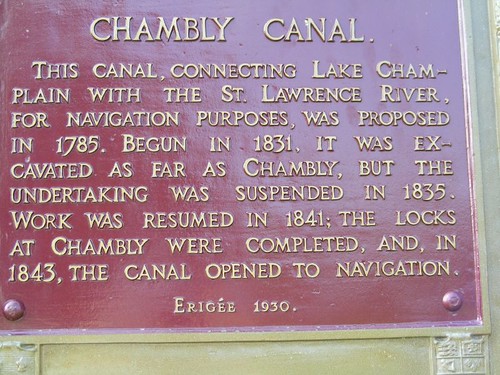
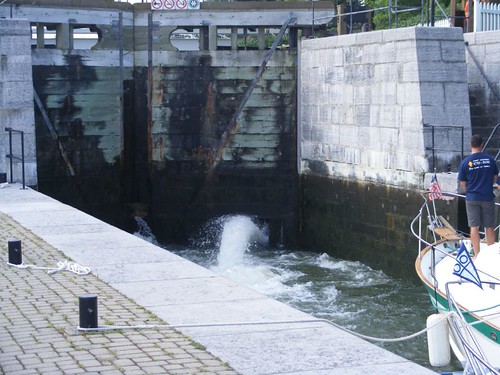
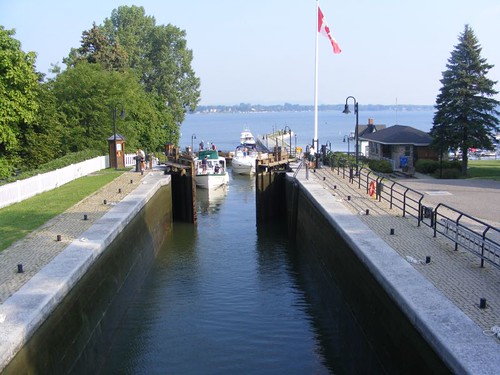
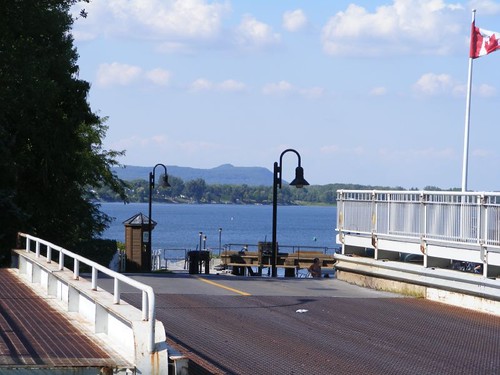

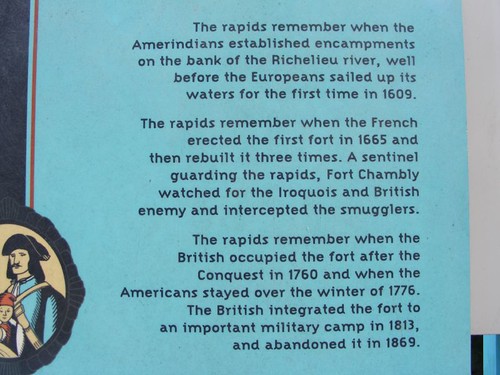
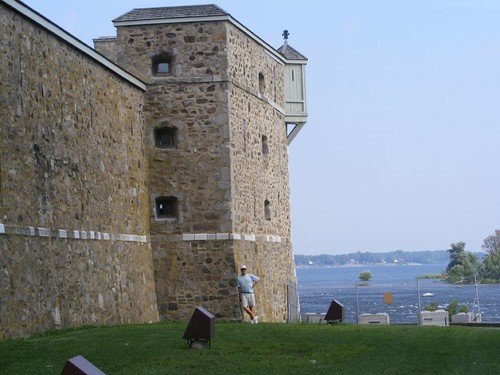
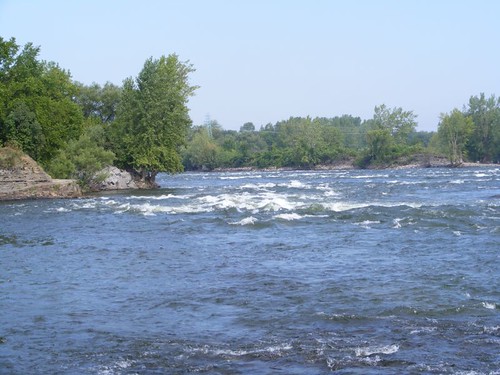
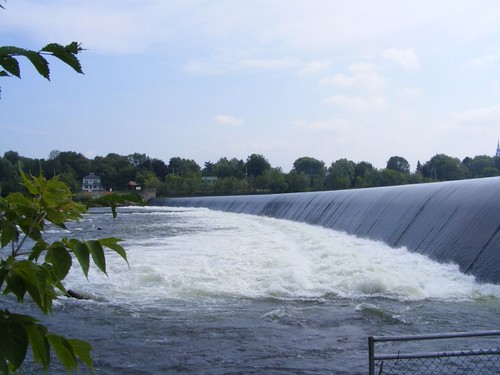
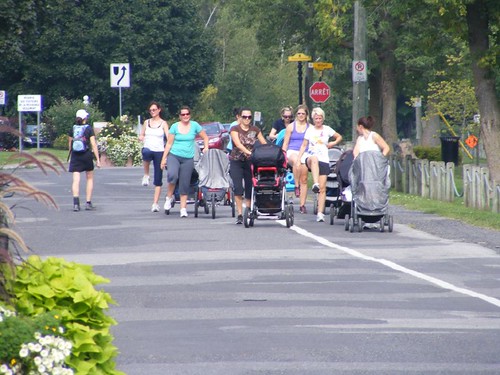
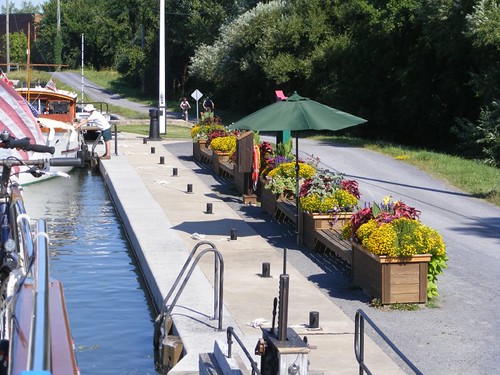
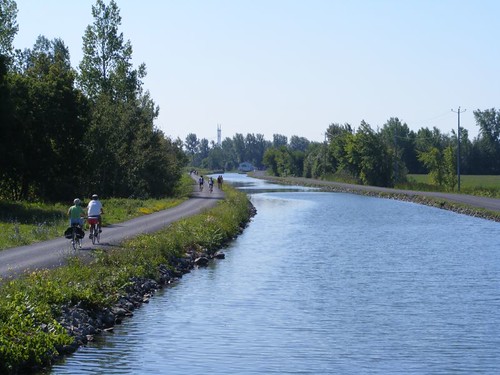
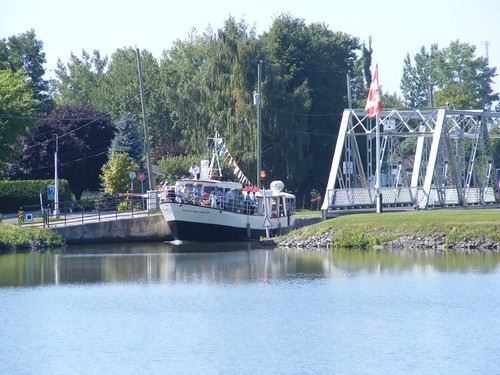
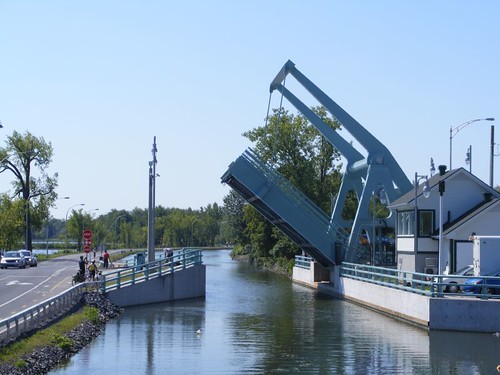








So many amazing things to see with constantly changing scenery - NICE!
ReplyDeleteJerry